Last night around 140 students attended the K=1 Project discussion panel.
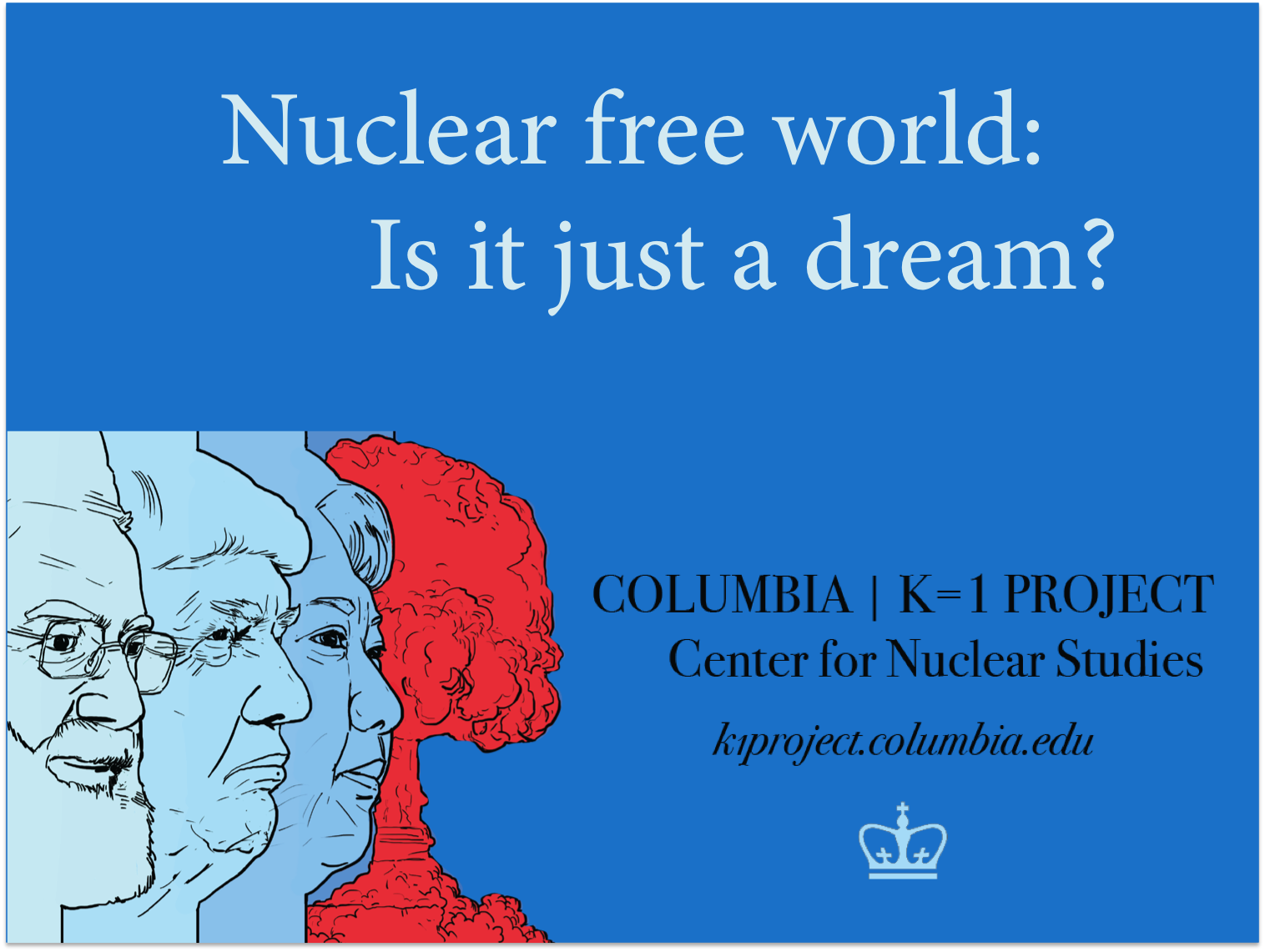
The mission of the K=1 Project is to promote informed discussion about nuclear proliferation issues, and to this end the Center organized a discussion panel, featuring Dr. Lynn Sykes, Higgins Professor Emeritus at Columbia University DEES and LDEO, and Mr. Michael Spies, Political Affairs Officer at the United Nations Office of Disarmament. The conversation was moderated by Dr. Ivana Hughes, Director of Frontiers of Science and Faculty Associate of the K=1 Project.
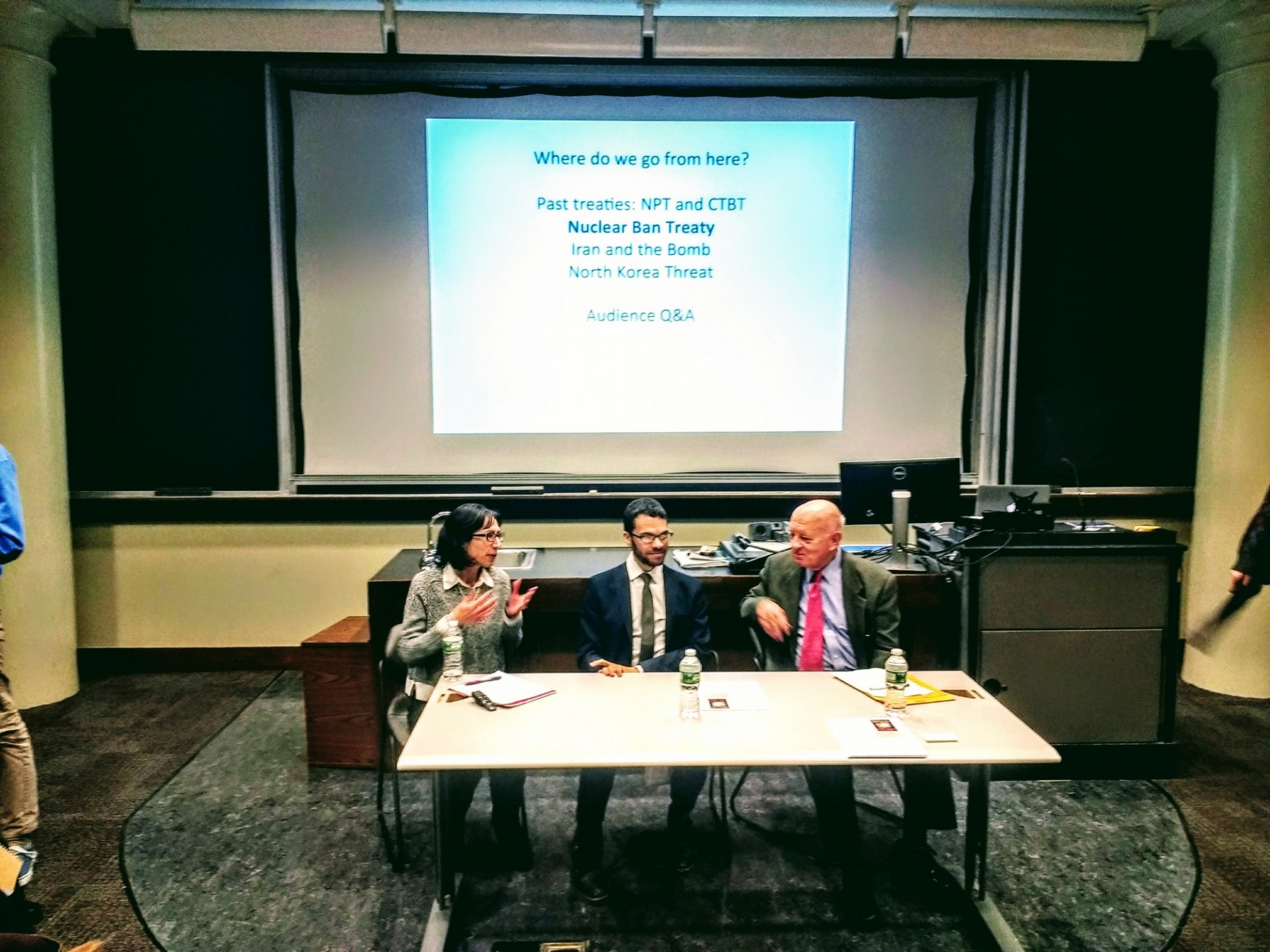
This discussion made me think of the fragility of human society and the ever present danger of nuclear proliferation (Student testimonial)
Dr. Hughes introduced the topic by showing the estimated number of nuclear warheads in the world over time, beginning with the acquisition of the first three nuclear bombs by the US in 1945. Currently, there are eight nuclear weapon states, plus North Korea, which has conducted several nuclear tests, including the most recent one on September 3, 2017. While the total number of nuclear warheads has decreased since the mid 80’s, and especially after the end of the Cold War, there are still approximately 10,000 nuclear weapons possessed by nuclear weapons states. Each of these warheads has an estimated average energy yield of about 100 Hiroshima bombs, meaning that the existing weapons in the world have an approximate total energy yield of about one million Hirosima bombs. As history has taught us, the consequences of the detonation of even one single bomb could be devastating.
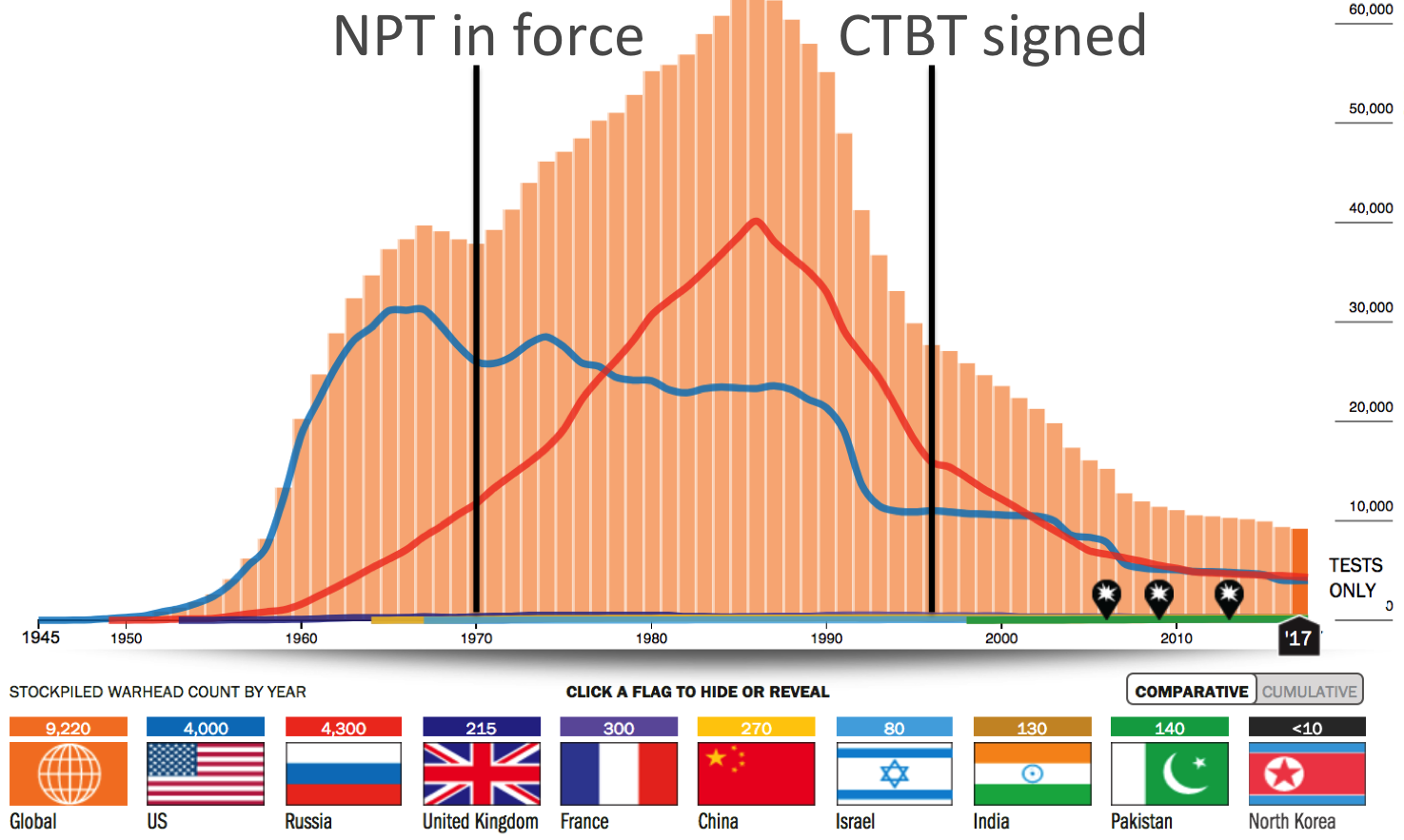
Our panelists followed the introduction by discussing some of the international treaties that have been negotiated over the years, including the Treaty of the Non-Proliferation of Nuclear Weapons (NPT), the Comprehensive Nuclear Test Ban Treaty (CTBT), and the most recent Treaty on the Prohibition of Nuclear Weapons.
Treaty on Non-Proliferation of Nuclear Weapons (NPT)
The NPT is an international treaty with the objective of preventing the spread of nuclear weapons and weapons technology and reinforcing the goal of nuclear disarmament. The treaty, opened for signature in 1968, entered into force in 1970 and has been signed by a total of 191 States, including five nuclear weapon states at that time: United States, Russia, the United Kingdom, France, and China. Three other nuclear weapon states: India, Israel, and Pakistan never signed the treaty and all obtained their nuclear weapons after it had gone into force. North Korea initially signed and ratified the treaty, but withdrew from it in 2003.
Comprehensive Testing Ban Treaty (CTBT)
CTBT is an international treaty that bans the testing of nuclear weapons by any member state anywhere, on the Earth’s surface, atmosphere, underground or underwater. This treaty is important because it does not only hinder the opportunity of nuclear weapon states to develop more powerful bombs, but also prevents non-nuclear holding countries from developing a bomb. In addition, it prevents the atrocious consequences of nuclear testing. The treaty opened for signature in 1996 and has so far been signed by 183 states and ratified by 166, including three nuclear weapon states: France, Rusia and the United Kindom. For the treaty to enter into force, though, 44 specific nuclear technology holder countries need to sign and ratify it, of which China, Egypt, India, Iran, Israel, North Korea, Pakistan and the USA have yet to do so. Our panelist Dr. Sykes, has dedicated a great part of his research career to the development of technology necessary to be able to detect nuclear tests around the world. He explained the four technologies used currently to monitor the Earth for signs of nuclear explosions: seismic, hydroacoustic, infrasound and radionuclide stations.
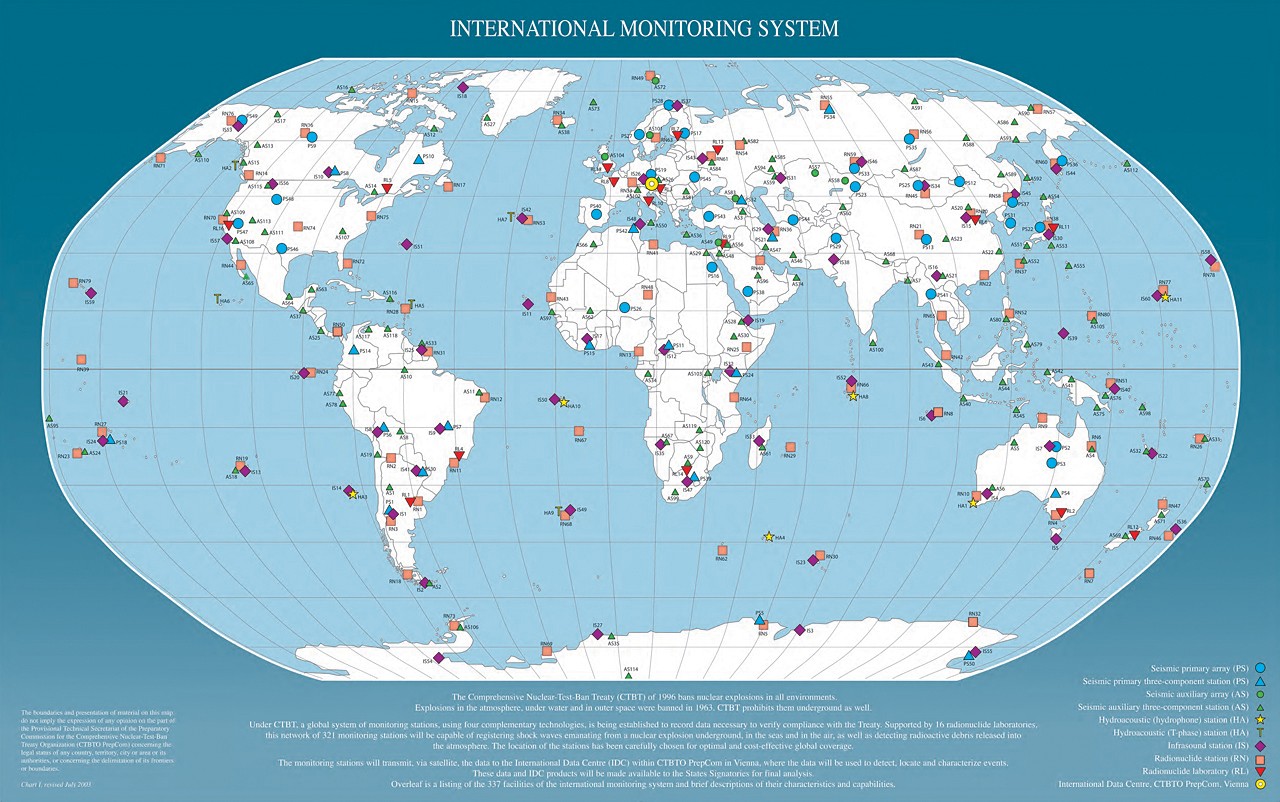
The Treaty on the Prohibition of Nuclear Weapons
The latest treaty was passed on July 7 of this year and is the first legally binding international agreement on total prohibition and elimination of nuclear weapons. In order for this treaty to come into force it has to be ratified by at least 50 countries. As of today, while 53 countries have signed it, only 3 have ratified it. None of the nuclear weapon states have signed the treaty or even participated in negotiations.
Iran and North Korea
Our panelists concluded the discussion by talking about their views on the Iran Deal and the North Korea nuclear program. Mr. Spies highlighted the difference between the two problems, as North Korea has already demonstrated that they possess nuclear capability, whereas Iran – as a result of the Iran deal - has subjected itself to more verifications and inspections than any other country in the world.
Moderated discussion ended by opening the room up for questions by the audience.
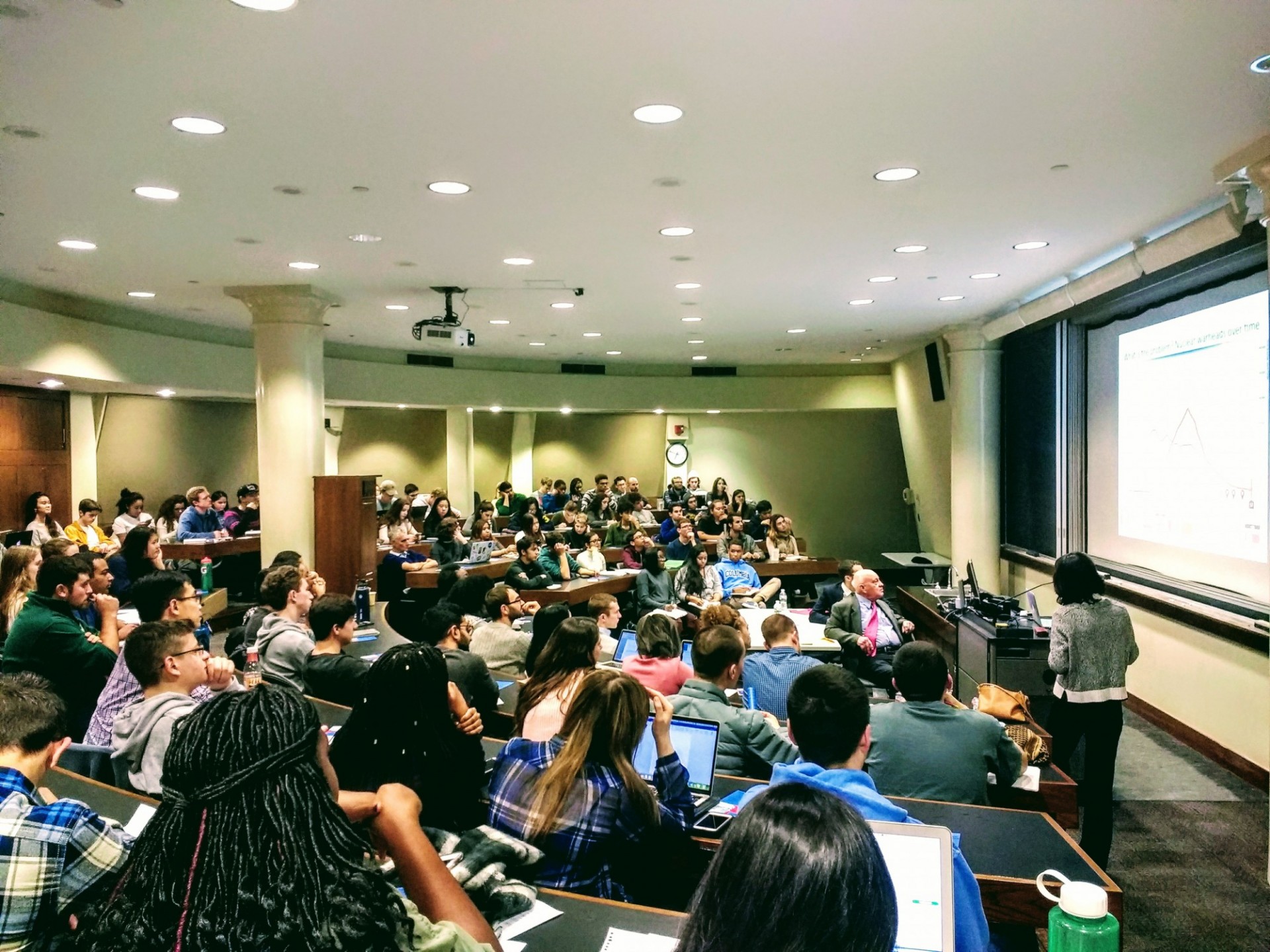
This event was well-aligned with the K=1 Project mission to facilitate informed conversations and engage the public and the younger generation in particular on the current state of nuclear policy.
Before this event, I had little interest in the subject of nuclear powers, but now, I will certainly follow future developments with interest and enthusiasm (Student testimonial)
